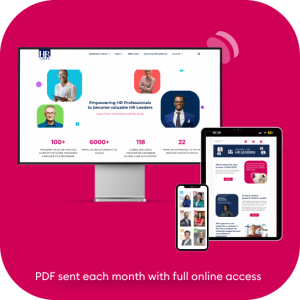Gone are the days of work-life balance. Enter: the work-life blend.
Before the prevalence of cell phones, email, and the internet, the line between a person’s work life and their home life was significant and obvious. Today, the idea of work has fuzzy boundaries. There are office hours, after-hours, and working lunches.
In between all of these, there is the awareness that at any moment, work could arrive via email, text or a Slack thread. Now that we can work from anywhere, most of us work everywhere – replying to texts on the sidelines of our kids’ soccer games and checking email at stoplights.
The incredible advances in technology and efficiency that made this possible over the last decade have set in motion a cultural revolution within the workplace. Teams that would have been siloed only a few years ago can now work together across state lines and time zones, and talent pools have widened exponentially now that geography is no longer a limiting factor for finding new hires.
When the pandemic upended the idea of collaborating in the same room, breathing the same air, these advancements and the magic of Zoom made it possible for business as usual to carry on by turning bedrooms and backyards into cubicles and conference rooms.
But all of this progress has come at a cost. Work crept into our homes in new ways during an enduring global pandemic that further blurred the lines around where work ends and personal life begins. Workers quickly became exhausted and began turning in their notice at record rates, creating what has been known as the Great Resignation.
That pattern of walking away from the workplace has become a reckoning that shows no signs of slowing down. This year, the Bureau of Labor Statistics in the US revealed that more than four million Americans quit their jobs every month for 11 months in a row.
Time has shown that people aren’t walking away from work in general, but from jobs that no longer suit them, and no amount of antiquated company perks – like happy hours, free Friday lunches or themed office days – can make them stay.
Workers have been expected to be productive while managing inordinate amounts of stress, juggling childcare and navigating everchanging public health guidelines. They’re tired of trading their mental health and stability for the sake of office performance quotas, and weary of sacrificing their own goals to help a company meet theirs.
Work-life balance is now an office relic, like landline phones and Rolodexes. To redeem workplace culture and reinvigorate the future of work, the only way forward is to embrace the ideology of the work-life blend.
Technology is key
Work and life will never be separated again. Instead of striving for the impossible balance between the two, the key to the future of healthy workplace culture is to blend, rather than balance, work and life.
Technology is the key to keeping teams connected, but for these interactions to be truly authentic, workplace culture has to be driven by more than simply software. An employee doesn’t leave their personal interests, drives, desires and motivations at the door when they walk in the office.
If the pandemic and Great Resignation have taught us anything, it’s that people want to work for companies that align with their own personal goals and values. As jobs demand more of people, so too people are demanding more from their jobs.
Workers are tired and jaded in many ways after witnessing how much their careers extracted from their personal lives during the pandemic, and now insist that their careers show interest in protecting their mental health, goals, emotional wellbeing and future plans.
People want connection at work, but only when it comes from a genuine cultural shift within the workplace. When that happens, the healthier relationship dynamics between employers and employees can propel productivity and team satisfaction to new levels.
Where Productivity and Purpose Meet
Employee contentment and satisfaction are stronger predictors of worker loyalty than any office perk could manufacture. And while happier employees may seem like a nice but unnecessary goal, consider the intrinsic value of employees who show up eager to work and the savings found in not having to regularly recruit and train new hires to replace the discontent workers who left.
It’s true, in part, that technology has been the catalyst for the erosion of work-life balance, but it can also be the antidote to an overworked, under-engaged workforce. Identifying where work and life blend together and then activating a technology-supported strategy that allows employees to find meaning in their jobs can be the key to accelerating company and employee growth.
The future of work is a powerful blend of productivity and purpose, and those who learn to harness that mindset and strategy now will be at the forefront of a cultural shift that is poised to define the shape of workplace culture for years to come.
Shawn DeVerse is the Co-founder and President of Blendification in Denver, Colorado, US.


























